Continue reading for our analysis...
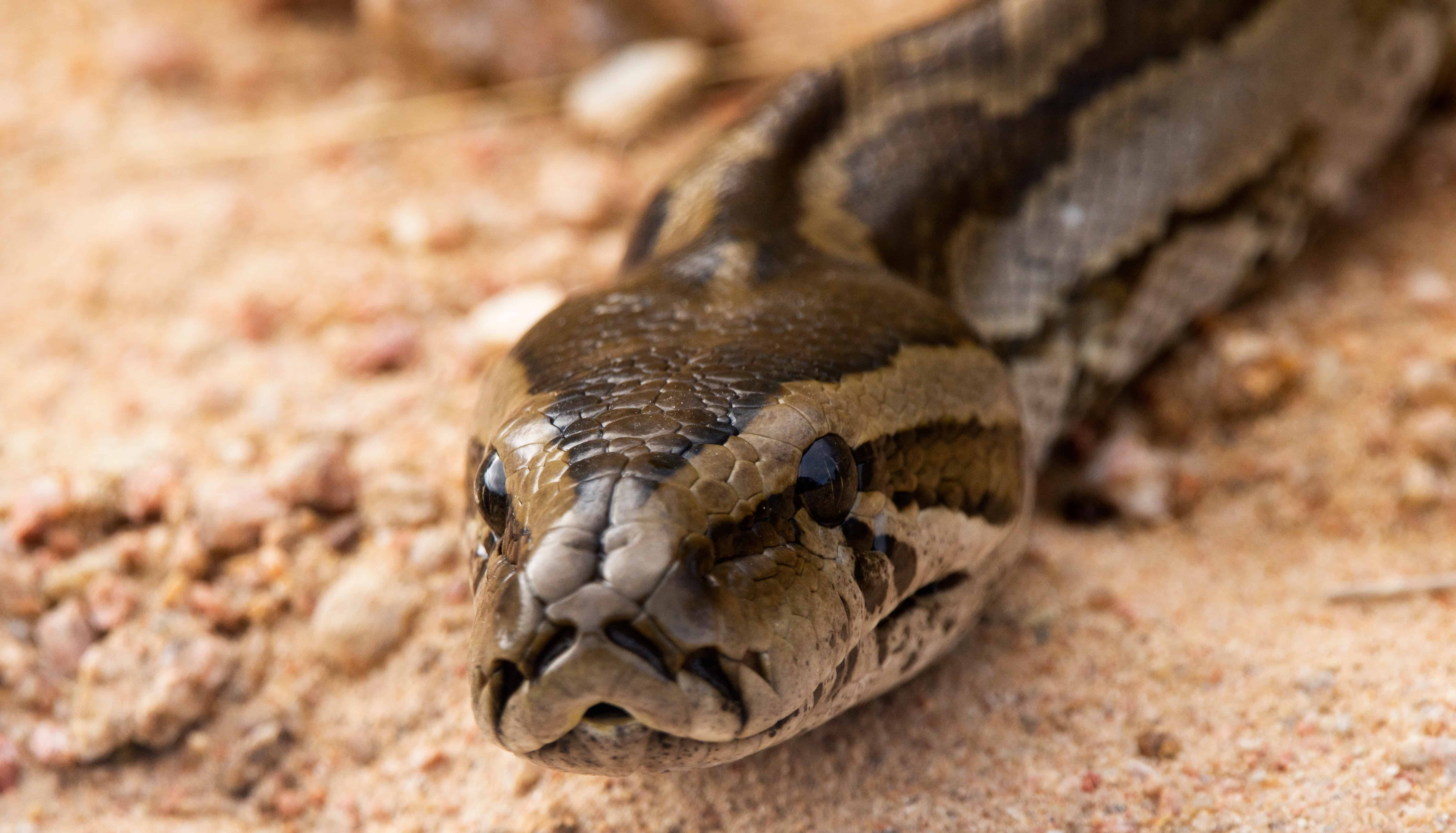
So, now we know that pythons are like white Range Rovers! Scroll down to watch the full video of this python seemingly getting very attached to a Range Rover and getting in the way of a group of people who were trying to uncouple their boat!
All About African Rock Pythons
The narrator refers to the snake in the clip below as a South African python. This is a subspecies of the Python sebae (rock python) species named after the Dutch zoologist called Albertus Seba.
The South African rock python is found in locations around southern Africa (from Namibia to the coasts of Tanzania and Mozambique) and is smaller and less colorful than the Northern African rock python.
Having said that, these guys can grow to around 16 feet and weigh up to 120 pounds – they are solid and heavily built snakes and not the sort of thing you want on your car! They have no venom glands but can give a very nasty bite when they feel threatened.
Grabbing hold of them, as the man in this clip attempts to do, is not a great idea unless you know what you are doing.
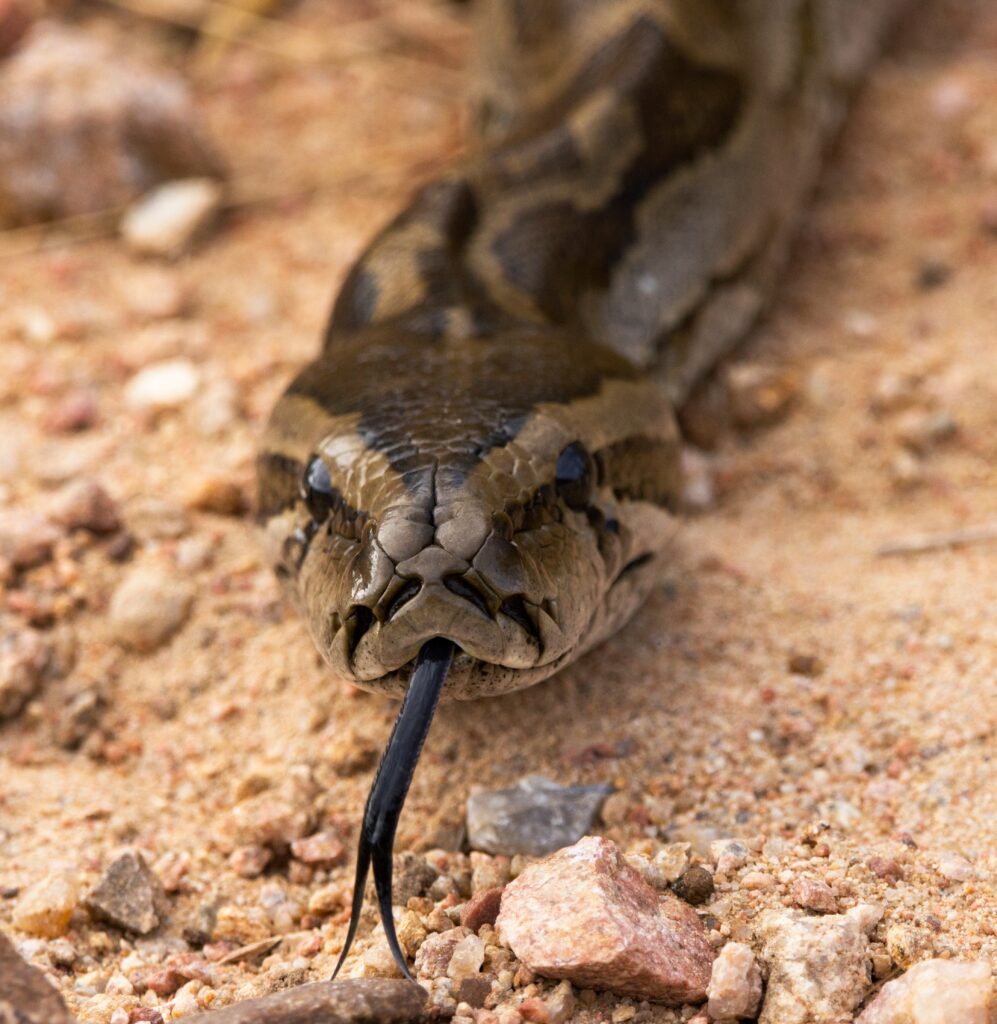
Southern African pythons detect chemicals in the air with their tongues
©Bruce Crossey/Shutterstock.com
The Largest Rock Pythons Ever Documented
The colossal African rock pythons have been documented to reach lengths of up to 19 feet and weigh approximately 200 pounds. Nevertheless, despite these remarkable measurements, they fall short of claiming the title of the heaviest snake on Earth. That distinction belongs to the South American green anaconda, which can stretch up to 17 feet in length and tip the scales at over 200 pounds.
Snake Climbing Onto the Car
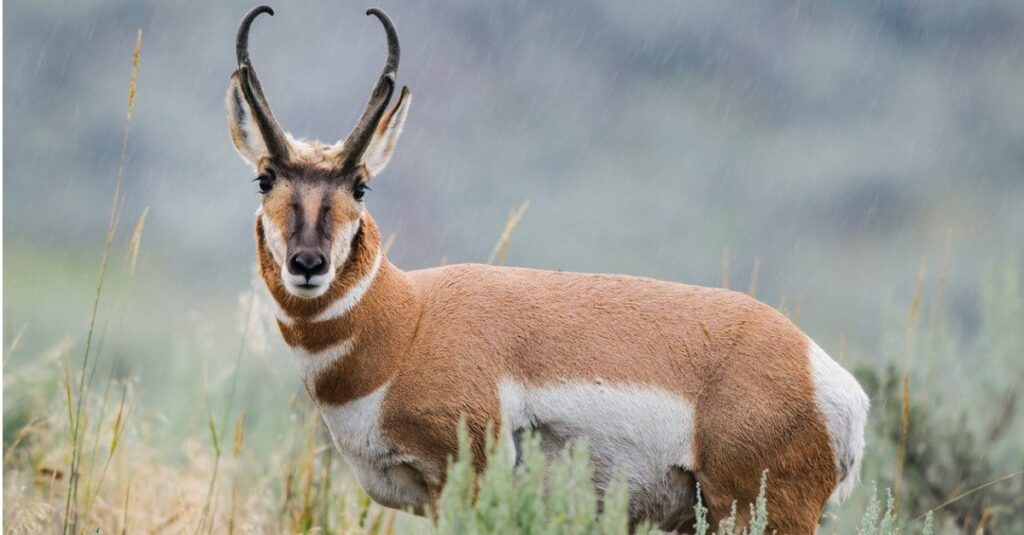
African Rock Pythons use their sense of smell to detect prey and have a diet that includes cane rats, hares, monkeys, and even small antelopes.
©BGSmith/Shutterstock.com
The snake is clearly unhappy about the human company and may feel threatened by the vehicles. It may have been confused by the chemicals/odors that the vehicles and humans were emitting.
They use their sense of smell to detect prey and have a diet that includes cane rats, hares, monkeys, and even small antelopes. There are also reports of them catching monitor lizards and crocodiles. The snake will ambush the prey and then constrict it before swallowing it whole. However, eating very large prey is not always the best plan.
When they have consumed a huge meal, they are swollen and sluggish, and this makes them a target for wild dogs and hyenas.
Because these snakes help to control rodent populations, they are of benefit to many farmers.
They have protected status in South Africa and must not be captured or killed. This one slipped quietly back into the undergrowth after its adventure.
Is it Normal Behavior for Snakes to Attack Vehicles?
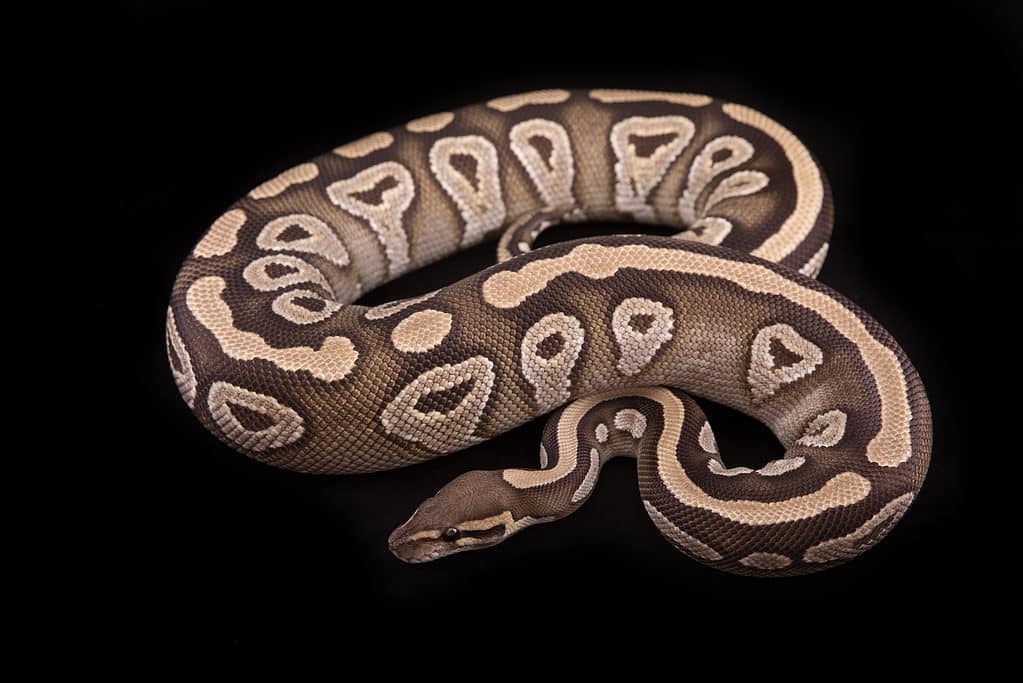
Snakes typically do not strike objects they do not intend to eat.
©Sanne Romijn Fotografie/Shutterstock.com
Snakes typically do not strike objects they do not intend to eat. The majority of snakes are non-aggressive and will only strike when hunting or defending themselves. However, certain snake species may become territorial or aggressive. Despite a significant amount of data on snake attacks, it’s important to remember that most snakes are not aggressive toward humans unless provoked or threatened.
Types of Pythons and Their Sizes
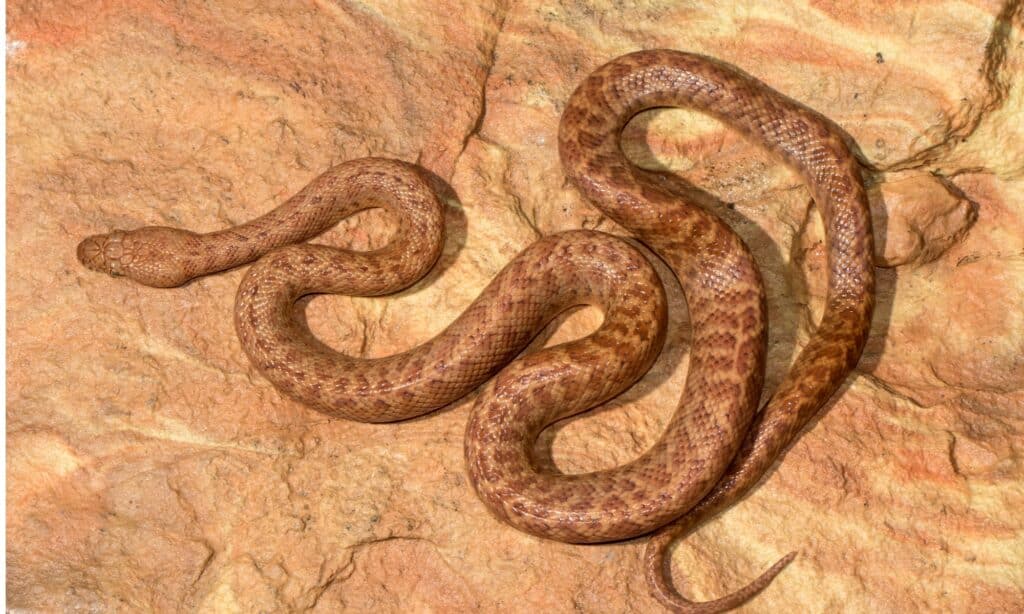
This species often takes shelter in large termite mounds with other snake species.
©iStock.com/Ken Griffiths
There are a variety of pythons found throughout the world, and they come in a wide range of sizes. The smallest of these is the Anthill Python, which is typically found in Australia and can grow to as little as 4 inches (10 centimeters) in length. On the other end of the spectrum, the Reticulated Python can grow to be as long as 30 feet (10 meters).
Several species of python inhabit the rainforests of Africa and Asia. The African Rock Python can reach lengths of up to 18 feet (6 meters), while the Burmese Python can grow to as long as 15 feet (5 meters). The Indian Python is a medium-sized species, usually reaching lengths of up to 9 feet (3 meters).
In the Americas, the Common Boa Constrictor generally grows to be just over six feet (2 meters) in length. The Caribbean Boa Constrictor is a smaller species, typically reaching lengths of up to 3 feet (1.5 meters).
Finally, there are two species of python that inhabit the waters of the Indian and Pacific Oceans. The Olive or Yellow-bellied Sea Snake can grow up to 4 feet (1.2 meters), while the Brown or Short-tailed Sea Snake is a smaller species, reaching lengths of up to 1.3 feet (40 centimeters).
No matter the size, all of these pythons are fascinating creatures, and it is important to take the time to appreciate and learn about each species.
Discover the "Monster" Snake 5X Bigger than an Anaconda
Every day A-Z Animals sends out some of the most incredible facts in the world from our free newsletter. Want to discover the 10 most beautiful snakes in the world, a "snake island" where you're never more than 3 feet from danger, or a "monster" snake 5X larger than an anaconda? Then sign up right now and you'll start receiving our daily newsletter absolutely free.
Thank you for reading! Have some feedback for us? Contact the AZ Animals editorial team.






